You'd probably be surprised at how many items we use every day started in a NASA lab. In their quest to bring the astronauts back safely, they have invented things that have taken the world by storm.

Check out sixteen widely used objects that NASA either invented, spent a lot of time and money improving, and ultimately managed to improve our lives.
Cell phone cameras
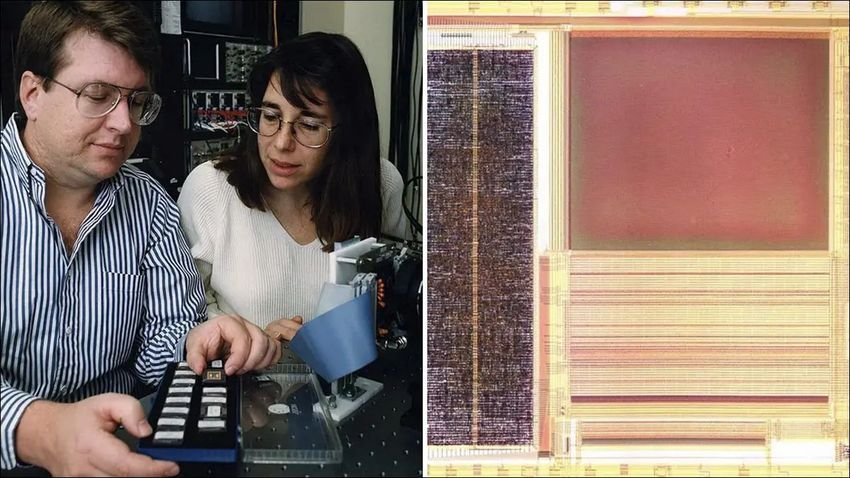
While it's hard to pin down which NASA invention will be the first on our list, given the sheer range of things the agency has been involved in over the years, we'll start with cell phone cameras.
The reason is that we all now use the mobile phone as a camera in our daily life. And in fact, many people buy a mobile phone with the first choice being how good the camera is.
From taking cute photos of our pets and kids to capturing historic moments on the streets, the cell phone camera has a huge presence in modern life.
In fact, with so many mobile phones on the streets, at a social event or incident, it is difficult to leave anything without being videotaped.
It all started in the 1990s at NASA's Jet Propulsion Lab (JPL), when a team led by NASA scientist Eric Fossum successfully miniaturized a CMOS (Complementary Metal-Oxide Semiconductor) sensor. These sensors were clearly superior to the Charge-Coupled Device (CCD) sensors in use at the time, but adoption was slow.
Fortunately Fossum and his colleague Sabrina Kemeny were persistent. They started the company Photobit and pioneered the use of CMOS sensors in industrial and commercial applications.
Their research and persistence paved the way for the tiny sensors found in your cell phone as well as many other applications such as compact home security cameras, video doorbells, camcorders, and anywhere else you need a tiny camera package with great results.
Memory foam

Memory materials are found in everything from pillows to mattresses and even the seats in your car. For that, you can thank NASA for its offering.
It was developed in the 1960s, "temper foam" was originally intended to provide deep, body-conforming cushioning to test pilots on NASA aircraft and later to astronauts to protect them from the intense pressure of space launches and the intense "rattling in body” upon returning to Earth.
It took a few years and a few revisions to the original foam formula, mostly to tweak it to be less insulating, but eventually, memory foam became ubiquitous. You'd be hard-pressed to find a household that doesn't have one (or several) memory foam items.
Wireless headphones
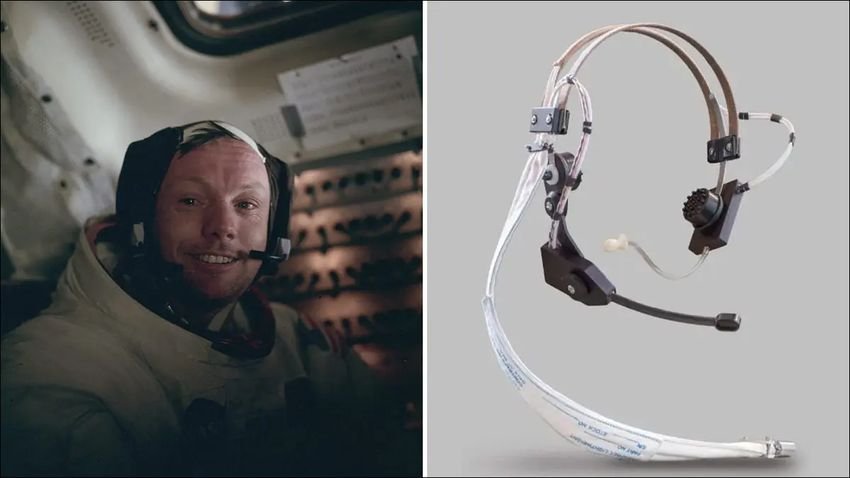
Back in the 1960s, NASA contracted a research laboratory, ITT Labs, to develop a portable wireless radio system to ensure that astronauts were not solely dependent on spacecraft-based communications.
The issue was especially urgent for NASA when Mercury astronaut Gus Grissom nearly died because flooding in his recovery capsule shorted out his radio equipment, and he had no backup system.
ITT Labs built a model based on one of Planctronics' aircraft headsets, and NASA ended up working directly with Plantronics to create a compact wireless version that fits directly into an astronaut helmet.
This led to a long collaboration between Plantronics and NASA, resulting in a variety of innovations in miniaturization, improved wireless communication, noise cancellation, and a variety of wireless headset benefits that we all enjoy today.
Clamshell Laptops
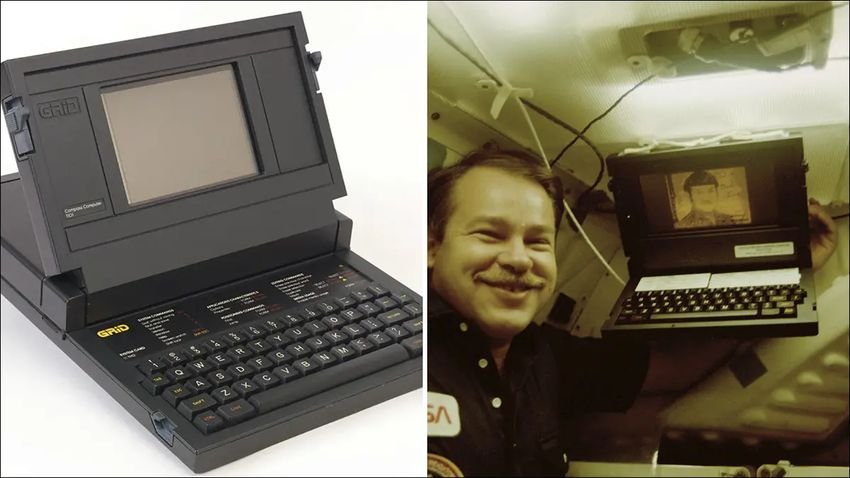
While NASA did not invent the laptop, the agency was instrumental in the very early years of their development.
At the beginning of the appearance in the market of desktop and laptop computers, NASA and other US agencies they contracted with a company called GRiD Systems to access their rugged PC, the GRiD Compass, which provided a 320×240 pixel display, an Intel 8086 processor, 340 KB of RAM, and support for external hard disk and floppy drives.
At NASA's request, various modifications were made over the years, including the introduction of laptop fans. The laptop was originally passively cooled, but in microgravity passive cooling didn't work well, requiring fans to push air over the components.
The design choices on these early laptops still hold up to this day.
Lenses resistant to scratches and with UV protection
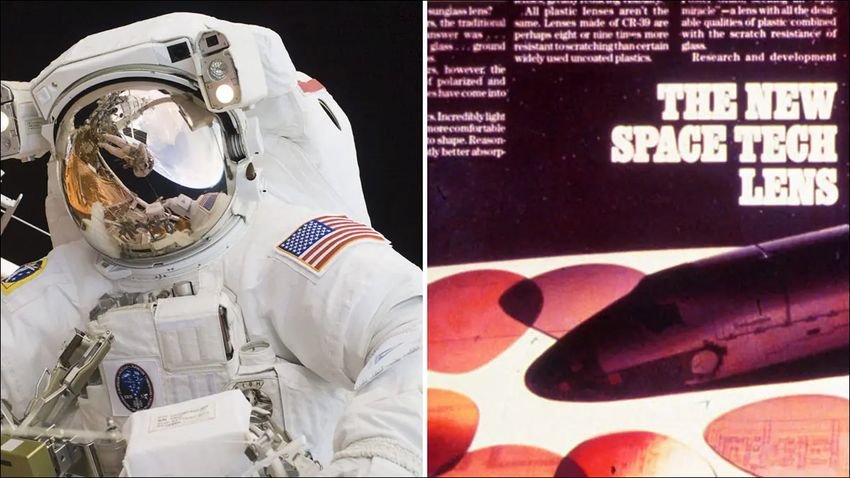
If you have scratch-resistant glasses in your drawer, or a phone with a scratch-resistant screen, you can start thanking NASA.
But even if you've bought cheap sunglasses or a very expensive welding mask, you can still thank NASA.
In an attempt to make the helmet covers of the astronauts more protective against UV light and more scratch-resistant, NASA researchers, in collaboration with eyewear company Foster Grant, made significant progress on both fronts.
Since the early 1980s, the non-scratch coatings created by Theodore Wydeven at NASA's Ames Research Center have been applied to millions of glasses and other surfaces. First on pairs of Foster Grant sunglasses and then almost everything.
Innovations in LED lights
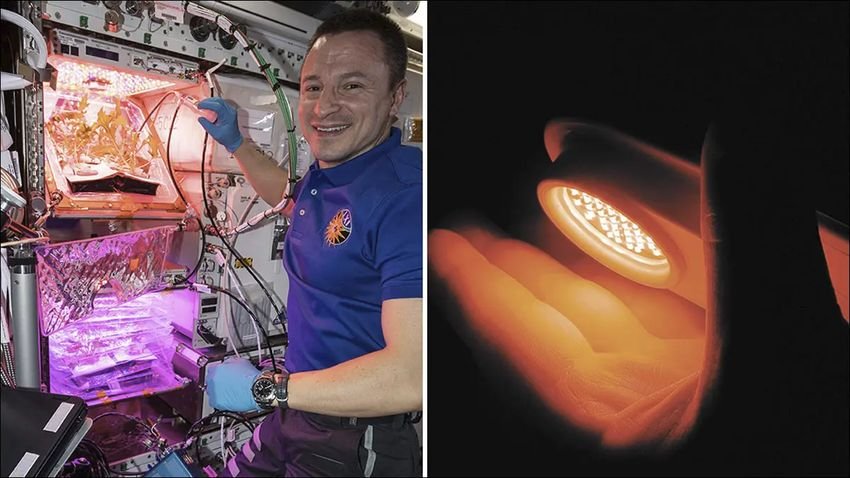
NASA didn't invent the LED. The history of LED prototypes goes back to the early 20th century, and the LED as we know it now was first invented by General Electric scientist Nick Holonyak Jr. in 1962.
But what NASA did was throw a lot of money into funding LED-based research into a bunch of things. From grow lights to help astronauts grow plants to the International Space Station to red and infrared LED lights for wound healing. Of course he also did a wide variety of research into lighting, focusing on its conservation circadian rhythm (Circadian rhythm).
In fact, the latest research has found its way into home lighting design, even into bedside lamps. When you set a sleep routine with Philips Hue lights or activate an app like Sleep Cycle, you're tapping into decades of NASA research on the subject.
Infrared thermometers

Infrared thermometers with their convenience (and makes them eco-friendly children) αλλά την speed μέτρησης, ξεκίνησαν ως συνεργασία της NASA between Diatek Corporation and JPL.
The method of measuring the thermowineας βασίστηκε στην ίδια τεχνολογία υπέρυθρης ακτινοβολίας που χρησιμοποίησε η NASA για τη μέτρηση πηγών υπέρυθρης ενέργειας στο βαθύ διάστημα, η οποία επαναχρησιμοποιήθηκε για να παρέχει ενδείξεις της θερμοκρασίας του ανθρώπινου σώματος.
The technology eventually spread to many tools, from the thermometers we use when we're sick to the handy temperature guns we use to check ovens and other surfaces.
Freeze-dried foods

Most of us haven't tried the food astronauts carry with them. But don't doubt that food preservation methods have benefited greatly from NASA, which has contributed significantly to improving food safety and storage methods around the world.
Research funded by NASA it's why, today, you can buy cereal with tiny bits of strawberry, for example, that seem to "magically" reconstitute themselves into something soft and sweet when dipped in milk.
NASA also made ice cream for space during the Apollo 7 mission, but it wasn't particularly popular. In fact, by the 1970s, technology had advanced enough that Skylab astronauts could eat regular ice cream.
Best quality baby cream
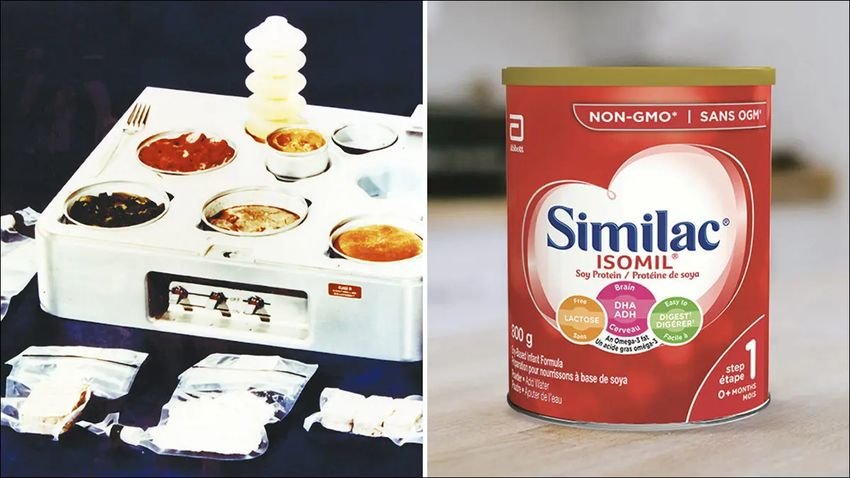
NASA didn't invent the formula for infant formula for babies, but research into cheaply and safely improving the nutritional value of food served to astronauts in space worked its magic.
Back in the 1980 decade, NASA and the Martin Mariette Corporation investigated the use of microalgae for various purposes, including food, oxygen production, and waste disposal, all in an effort to make a prolonged stay in orbit possible.
In the process, they discovered that an essential fatty acid, docosahexaenoic acid (DHA), could be mass-produced using algae strains. They later found a way to produce another essential fatty acid, arachidonic acid (ARA), using fungi.
The latter, and DHA, became vital in the production of an improved infant formula for creams and, later, in the fortification of milk. In fact, if you look at the label on baby formula or milk fortified with DHA today, you will almost certainly find that the DHA is provided by an algal source.
DHA is critical for brain development and since the discovery of this inexpensive production method, millions of babies around the world have enjoyed better brain development as a result of its inclusion in infant formula.
Cordless vacuum cleaners and power tools

The Black & Decker DustBuster, introduced to the market in 1979, was an innovation. It was a tiny handheld vacuum cleaner that ran on an internal battery.
This doesn't sound amazing today, since practically everything is now manual and powered by a battery, but back then a battery-powered revolution began in household appliances and power tools.
This wave of battery-powered consumer tools was fueled by research conducted on behalf of NASA. NASA in the late 1960s commissioned Black & Decker to build battery-powered versions of various tools, such as drills for taking lunar samples.
The research resulted in the construction of high-performance engines, which became the foundation for the engine program that would power the DustBuster and other tools.
Improved smoke detectors
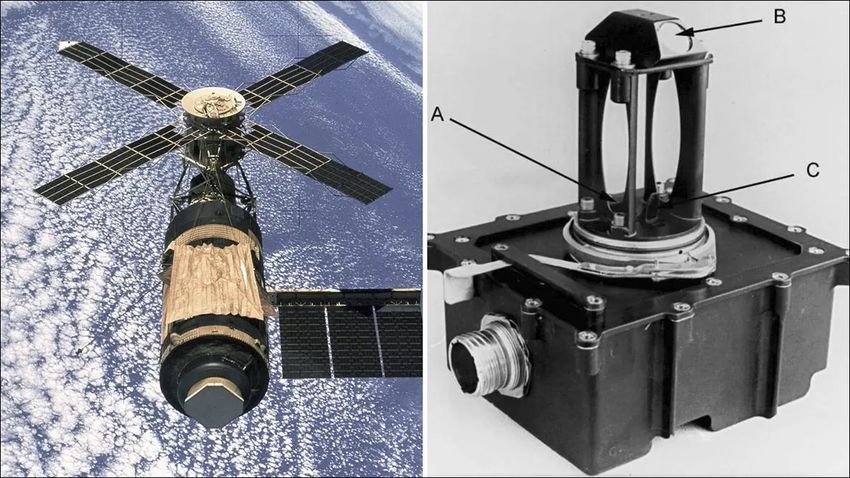
Ionization (smoke) detectors are the most popular type of smoke detector in the world, and we can thank a partnership between NASA and Honeywell in the 1970s for this.
This collaboration focused on creating smoke detectors for Skylab which would detect fires but not produce false alarms.
The detectors had a wider particle detection range so that a tiny bit of particle would not set them off and were an upgrade over the then existing commercial models.
Later improvements in smoke detection, such as photoelectric sensors, improved things further, but ionization detectors remain an inexpensive and widely available option.
NASA continues to conduct research in this field to create new and advanced ways to detect fires in space. The photo, top right, shows a type of infrared laser smoke detector designed for the International Space Station by Honeywell. Maybe one day, they'll even invent a smoke detector that doesn't expire.
Invisible braces
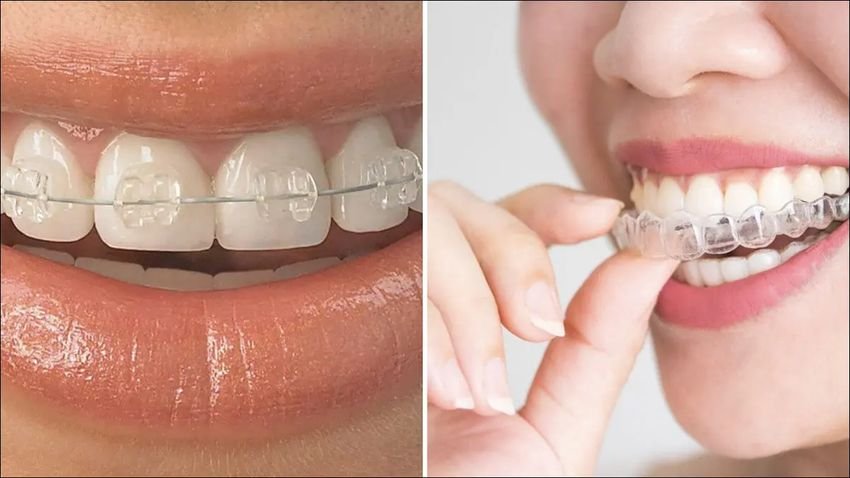
The material in question is translucent polycrystalline alumina (TPA). It was originally discovered by NASA while researching extremely strong polymers that could coat radar equipment without reducing signal transmission.
The original dental application was for dental brace bases on each tooth, but which were still connected together with a wire like traditional braces.
Later, companies like Invisalign made aligner trays that covered the entire tooth without connecting wires. And she's not the only one important contribution to dentistry, which NASA has done.
Improved tires

In the 1970s, a partnership between NASA and Goodyear Tire to development of stronger materials for parachute covers used on Viking landing craft, led to improved tires.
When the fibers were used in radial tire design, it yielded a tire with five times the strength of a traditional tire and increased tread life.
In addition to tires, NASA has also made significant contributions to highway safety with the safety groove. If you've ever driven down a stretch of highway and noticed that the highway had longitudinal grooves carved into it, you've just seen a NASA creation.
Grooves were originally applied to runways used for space shuttle landings to reduce slippage and have since been applied to roads, sidewalks and other concrete surfaces for the same purpose.
Emergency tools
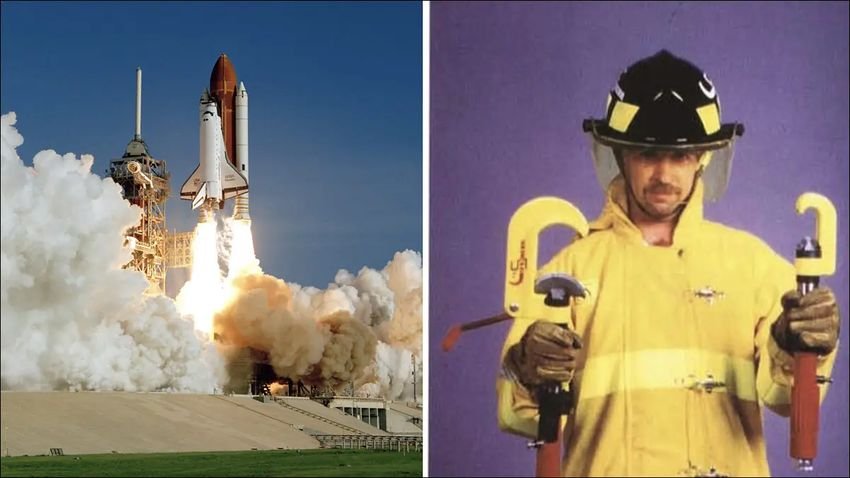
This is an invention that we hope none of us will ever need. Historically, emergency tools used to pry open crumpled sheet metal on cars or cut through the crushed substructure of a collapsed structure were heavy and usually hydraulic.
A collaboration between NASA, firefighters and Hi-Shear Technology has resulted in a truly ingenious reimagining of existing NASA technology.
By reducing the bulk of the shearing device used to separate shielding tiles from space shuttles, a hand-held device emerged that could shear metals.
So they created a very portable and very powerful tool for rescuing people trapped inside a car.
The resulting product, the Lifeshears, has been in use since the 1990s and was even used during rescue efforts after the 11/XNUMX attack on the twin towers in America.
Aluminum foil blankets

You'll often hear about shiny thin emergency blankets, like those wrapped around car accident survivors. Also referred to as "space blankets».
That's because the reflective metallic material they're made from was invented by NASA to help shield and insulate equipment, even entire sections of space stations.
This particular technology is now used around the world for situations such as emergencies or by performance athletes. But various companies have also incorporated the technology into gloves, clothing and other apparel.
After all, NASA has a long history of driving innovation in textile products.
Home insulation
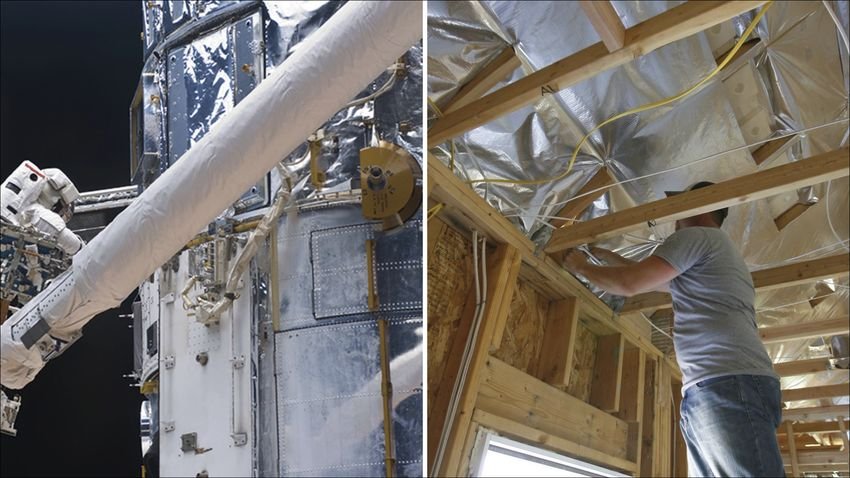
Closely related to the insulating properties of space blankets is the use of NASA technology in insulation of the house.
Several companies manufacture a radiant barrier style of insulation, based on technology first developed in the 1960s to help insulate Apollo-era astronauts from the extreme temperatures of space, such as the RadiaSource shown above on the right.
By sandwiching a lightweight layer of thermal break (insulation) between two layers of polymer with aluminum, this style of insulation can help stabilize a home's temperature, and is much, much thinner than traditional insulation.
More NASA-funded technology
Talking about NASA's inventions, we could write for months without covering everything that its efforts have brought to the world. If you enjoyed this article, we highly recommend checking it out NASA spinoff.
It is a record maintained by NASA that highlights all the ways it has discovered or funded technology that has been used outside of the space program.
You'd be surprised how many little things around you started life as part of the early space program and beyond. From telescope mirror technology that improves eye surgery to water filters that work like human kidneys, there's a surprising amount of NASA technology in the world around you.
And if you ever hear the question "Is NASA worth it?" you should first think about what your life would be like without all these discoveries.






Perhaps the fountain pen should be added which has gel on the back of the ink and can write in places where there is zero gravity. A pen for which NASA spent about $1 million to develop, at the same time that Russian cosmonauts were writing notes in pencil on their missions, spending nothing and subsequently finding the American invention ready.
https://kladi.gr/product/fisher-ag7-original-space-pen/